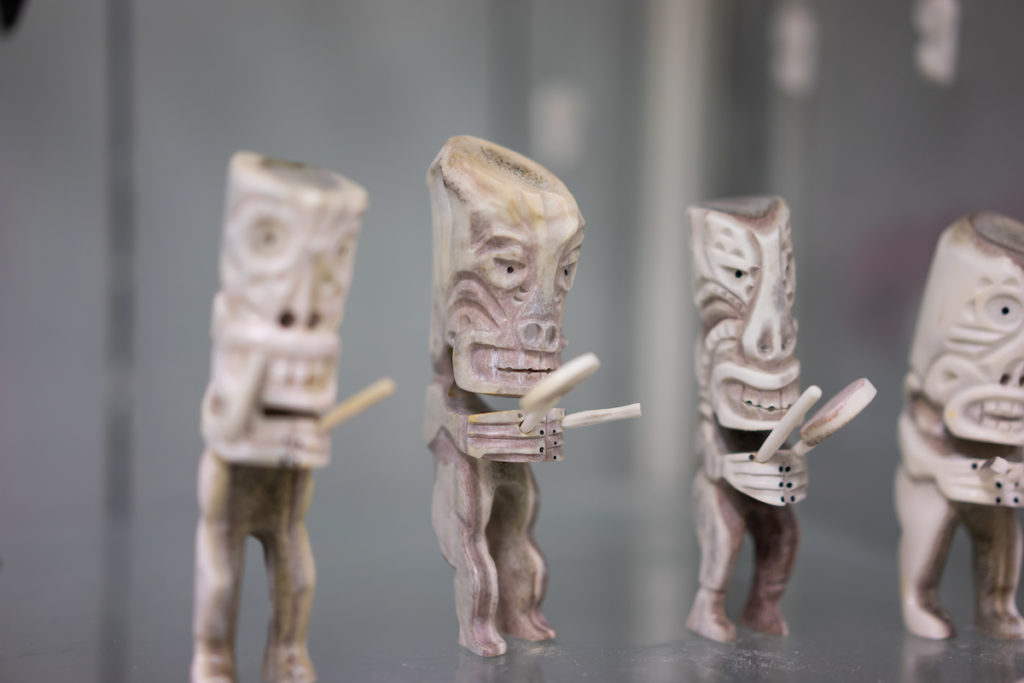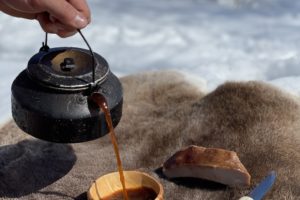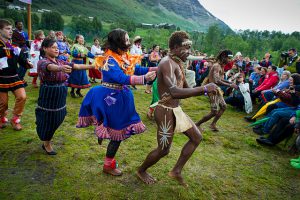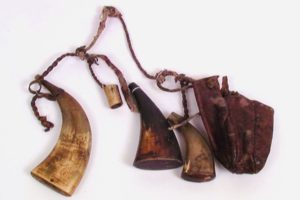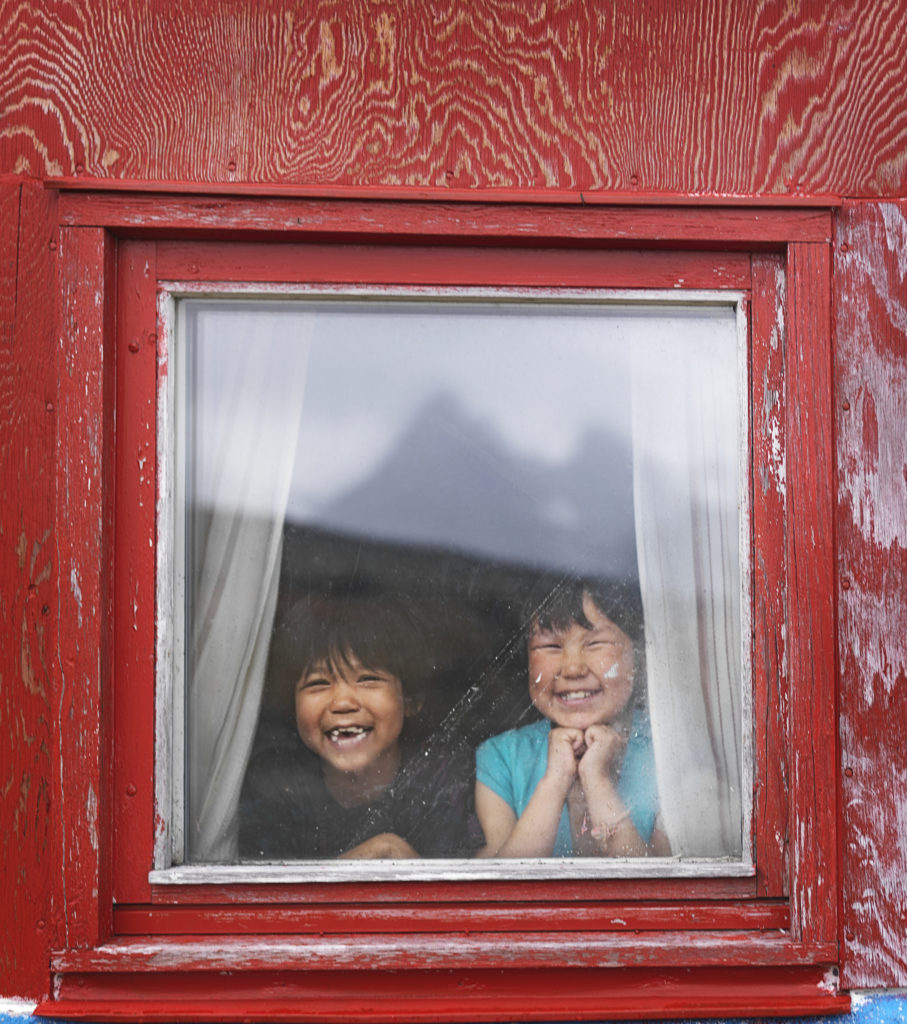
Foto: David Trood – Visit Greenland
Inuit from Greenland
Tekst: Riddu Riđđu
Inuit from Greenland was the Northern people of the year 2022.
Inuit are the Indigenous people and majority population of Kalaallit Nunaat (Greenland), a self-governing country of approximately 60,000 people within the Kingdom of Denmark.
The Government of Greenland secured self-government in 2009, enabling the national government to exercise jurisdiction over most areas affecting its population. Greenland is therefore politically distinct globally as a country whose population is primarily Indigenous, and whose only official language, Kalaallisut, is an Indigenous language.
Inuit are one people whose territory, Inuit Nunaat, encompasses parts of Chukotka in the Russian Far East, western and northern Alaska, Inuit Nunangat or Arctic Canada, and Greenland. Inuit rapidly migrated from Alaska and Canada to Greenland and began occupying the island approximately 1,000 years ago, making the Inuit language and culture among the largest in the world by geographic area.
LANGUAGE
There is significant linguistic and cultural diversity among Greenlandic Inuit. Three unique sub-cultures and major dialects exist: Inughuit in Northwest Greenland, Kalaallit along the western coast, and Tunumiit in East Greenland. Kalaallisut is the only official language in the country and it is the dialect taught in primary and secondary schools and used to conduct official business.
Most Inuit in Greenland also speak Danish, which is a language of instruction throughout the education system and is used among the Danish-speaking workforce, particularly among government officials and senior managers within the private sector.
EFFECTS OF COLONIZATION
Greenlandic Inuit culture and spirituality have been eroded through processes of Danish colonisation. Greenland was a Danish colony from the early 1700s until 1953, a period during which Inuit culture and spirituality was suppressed and discouraged by Christian missionaries and Danish officials. However, drum dancing and other elements of Inuit culture were retained by Inuit in Northwest and East Greenland, which did not have sustained contact and influence from Denmark until the 1900s.
Many Inuit in Greenland struggle with social and economic challenges that Inuit also face in Russia, Alaska and Canada, including elevated rates of suicide, high prevalence of family violence and child sexual abuse, high poverty, poor health and low educational attainment. Some challenges can be traced to experiences of intergenerational trauma, including traumas caused directly and indirectly by the closure of Inuit communities and relocation of families into larger settlements by the Danish Government during the 1950s and 1960s, systemic racism experienced by Inuit ruled over by Danish officials, as well as specific measures such as the clandestine sterilisation of some Inuit women by Danish health officials without their knowledge or consent as recent as the 1970s.
Other challenges can be traced to major social and economic inequities within Greenlandic society, including major economic and educational inequality between Inuit and Danes, as well as poor and underdeveloped health and educational services administered by the Government of Greenland.
TODAY
Despite the erosion of Inuit culture and spirituality, the Greenlandic language remains resilient and is spoken and used in every sector of society, and it is the most vibrant Indigenous language spoken in North America. Kalaallisut is also promoted and sustained through the arts, including through Greenland’s vibrant contemporary music scene, live theater, and television and radio broadcasting. Inuit in Greenland continue to harvest and rely on traditional foods such as seal, whale, and caribou. Inuit in Greenland have developed a commercial food system that is unique among Inuit regions, with foods such as seal, whale, musk ox and caribou being sold in stores throughout the country.
Inuit identity within Greenland and Greenland’s cultural and political identities are evolving. Most Inuit and political parties in Greenland support severing ties with Denmark and securing full sovereignty and independence. Recent governments have prioritized economic measures to offset the country’s economic dependence on Danish block grants. Despite being part of the North American continent and sharing a history and culture with Inuit in Russia, Alaska and Canada, Greenland has largely been politically and physically cut off from the rest of North America, including other Inuit and other Indigenous peoples. For example, until the 2000s when a permanent route between Iceland and Greenland opened, it was only possible to fly to and from Greenland on a commercial flight from Copenhagen. The ongoing construction of new international airports in Ilulissat and Nuuk will change this, enabling new permanent routes to open between major North American cities and Greenland that may facilitate stronger political, economic, and cultural ties.
Greenland also differs from the U.S and Canada in that Inuit or Indigenous legal frameworks recognising Inuit rights as distinct from rights attaching to all residents of Greenland do not exist. Elected officials have in recent years publicly debated whether or not the national government should recognise Inuit and by what criteria determining Inuit membership could or should be made.



